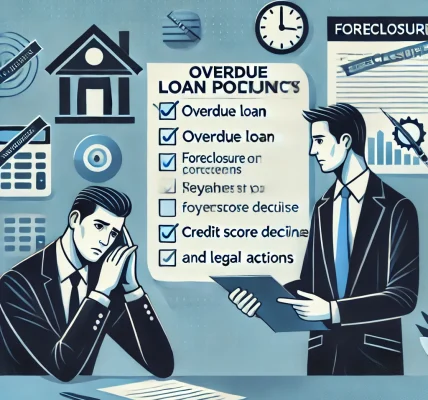Introduction
Economic recessions and financial crises bring uncertainty, impacting individuals, businesses, and financial institutions. Loan policies play a crucial role in stabilizing economies by adapting to new financial realities. In this article, we will explore how loan policies evolve during economic downturns, their impact on borrowers and lenders, and the measures taken by financial institutions and governments to mitigate financial distress.
Understanding Economic Recessions and Financial Crises
An economic recession is a period of declining economic activity, often characterized by reduced consumer spending, rising unemployment, and financial instability. Financial crises, on the other hand, involve disruptions in the financial system, such as banking collapses, stock market crashes, or liquidity shortages.
During such times, borrowers struggle to repay loans, and lenders face increased risks of defaults. As a response, loan policies are adjusted to accommodate the changing economic landscape.
Key Adjustments in Loan Policies During Economic Downturns
1. Lower Interest Rates to Encourage Borrowing
Central banks and financial institutions often lower interest rates to stimulate borrowing and investment. Lower rates make loans more affordable, helping businesses and individuals maintain financial stability.
2. Loan Moratoriums and Deferred Payments
During economic crises, banks and financial regulators may introduce moratoriums, allowing borrowers to temporarily pause loan repayments without penalties. This measure helps businesses and individuals manage cash flow challenges without defaulting on loans.
3. Flexible Loan Restructuring Policies
Lenders may offer restructuring options, such as extending loan tenures, reducing interest rates, or modifying repayment schedules. Loan restructuring helps prevent defaults and maintains financial stability in the lending system.
4. Government-Backed Loan Programs
Governments often introduce relief measures, such as stimulus packages, subsidized loan programs, and guarantees for small businesses. These policies help ensure continued access to credit during economic downturns.
5. Stricter Lending Criteria
While some policies aim to facilitate borrowing, lenders also tighten eligibility criteria to reduce the risk of defaults. This may include higher credit score requirements, increased collateral demands, and stricter income verification processes.
6. Increased Focus on Risk Assessment
Financial institutions reassess risk factors and adjust loan approval criteria based on the borrower’s industry, job stability, and overall financial condition. Sectors severely impacted by the recession may face difficulties securing loans.
7. Special Loan Programs for Affected Sectors
Governments and banks may introduce industry-specific loan programs to support businesses in hard-hit sectors such as tourism, hospitality, and manufacturing. These programs often come with lower interest rates and extended repayment terms.
8. Loan Forgiveness and Debt Relief Programs
In extreme economic crises, governments may introduce debt relief programs, such as partial loan forgiveness for struggling businesses and individuals. This helps prevent large-scale defaults and economic collapse.
The Impact of Loan Policy Adjustments on Borrowers
For Individuals:
- Increased access to lower-interest loans helps manage financial stress.
- Loan deferments provide temporary relief from financial obligations.
- Stricter lending criteria may make borrowing more challenging for some.
For Businesses:
- Loan restructuring and government-backed credit programs ensure financial continuity.
- Stricter risk assessments can limit access to funds for high-risk businesses.
- Industry-specific loan policies provide tailored financial assistance.
For Financial Institutions:
- Adjusted loan policies help mitigate risks of mass defaults.
- Lower interest rates can reduce overall profitability.
- Government support ensures continued liquidity in the financial system.
Conclusion
Economic recessions and financial crises necessitate dynamic adjustments in loan policies. While financial institutions and governments implement measures to ensure economic stability, borrowers must stay informed and proactive in managing their financial obligations. By understanding these policy changes, individuals and businesses can better navigate financial uncertainties and plan for a more secure future.




